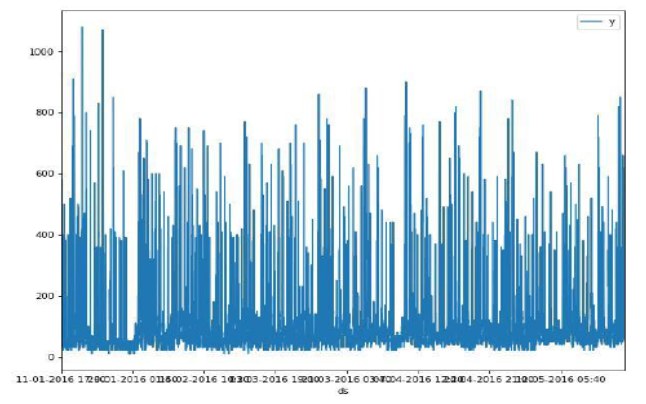


Indian Journal of Science and Technology
DOI: 10.17485/IJST/v13i47.1847
Year: 2020, Volume: 13, Issue: 47, Pages: 4631-4645
Original Article
Rachel Joy Chadalavada1, Srinivasaiah Raghavendra2*, V Rekha3
1PG Scholar, Department of CSE, School of Engineering and Technology, CHRIST Deemed to be University, Mysore Road, Bengaluru, 560074, India
2Associate Professor, Department of CSE, School of Engineering and Technology, CHRIST Deemed to be University, Mysore Road, Bengaluru, 560074, India. Tel.: +0-974-085-7501
3Assistant Professor, Department of CSE, School of Engineering and Technology, CHRIST
Deemed to be University, Mysore Road, Bengaluru, 560074, India
*Corresponding Author
Tel: +0-974-085-7501
Email: [email protected]
Received Date:20 October 2020, Accepted Date:16 December 2020, Published Date:29 December 2020
Objectives: The main objective of this research work is to forecast the electricity requirement of a particular household or an office or any building. Methods: Forecasting is done using the PROPHET model which gives better results compared to other models like ARIMA and so on. Dataset considered here is a publicly available dataset called ‘Appliance’ dataset with what are all the appliances that are there in the particular household and number of appliances that are running on a day at every 10 minutes interval and so on. From the entire dataset, only two attributes are selected, and Log transformation is applied to the selected attributes. Finally, the PROPHET model is applied and the forecasting is done. Findings: The findings of the proposed models are: (i) Forecasting is done for the next 30 days based on different components like daily component, weekly component and trend component (ii) Wednesday is the lowest power utilization day and, power utilization increases till Saturday and Saturday is the highest power utilization day (iii) PROPHET model makes predictions very accurate based on the future data and is easy to make predictions compared to ARIMA. Novelty: Models were trained on the dataset from January 11, 2016, to May 27, 2016 interval which is at 10 min for about 4.5 months. The models anticipated qualities that could be viewed as effective in the 30-day forecast. The accomplishment of the model in the time series expectation was investigated and analyzed.
Keywords: Electricity; forecasting; PROPHET
© 2020 Chadalavada et al.This is an open access article distributed under the terms of the Creative Commons Attribution License, which permits unrestricted use, distribution, and reproduction in any medium, provided the original author and source are credited. Published By Indian Society for Education and Environment (iSee)
Subscribe now for latest articles and news.